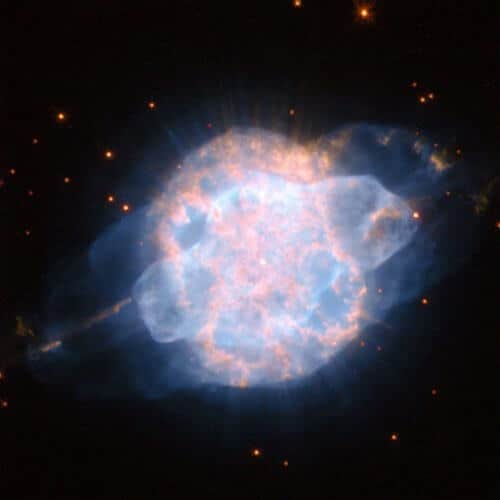This spectacular image from the Hubble Space Telescope shows the planetary nebula NGC 3918, a bright cloud of colored gas in the constellation Centaurus, about 4,900 light-years from Earth.

This spectacular image from the Hubble Space Telescope shows the planetary nebula NGC 3918, a bright cloud of colored gas in the constellation Centaurus, about 4,900 light-years from Earth.
In the center of the gas cloud, dwarfed by the nebula are the dying remains of a red giant. During the final twitch phase in the evolution of these stars, huge clouds of gas were ejected from the surface of the star and when they dissipate it will be revealed that the star has become a white dwarf. Intense ultraviolet (ultraviolet) radiation from the remnant star causes the gas around it to glow like neon. These unusual and colorful planetary nebulae are among the most dramatic objects in the night sky and often have strange and irregular shapes that are not yet fully explained.
NGC 3918's unique shape, with a bright inner body of gas and a more diffuse outer envelope extending away from the nebula, looks like it may be the result of two separate gas ejections. But this is actually not the case: studies of the nebula show that they formed at the same time, but moved away from the star at different speeds. The speed of the strong gas jets visible at the end of the large structure is estimated at 350,000 km/h.
By the standards of astronomical phenomena, planetary nebulae like NGC 3918 have a very short lifetime - a few tens of thousands of years.
The image consists of visible light and near-infrared light images, taken with the planetary/wide field camera #2.
For information on the NASA website
More of the topic in Hayadan:
